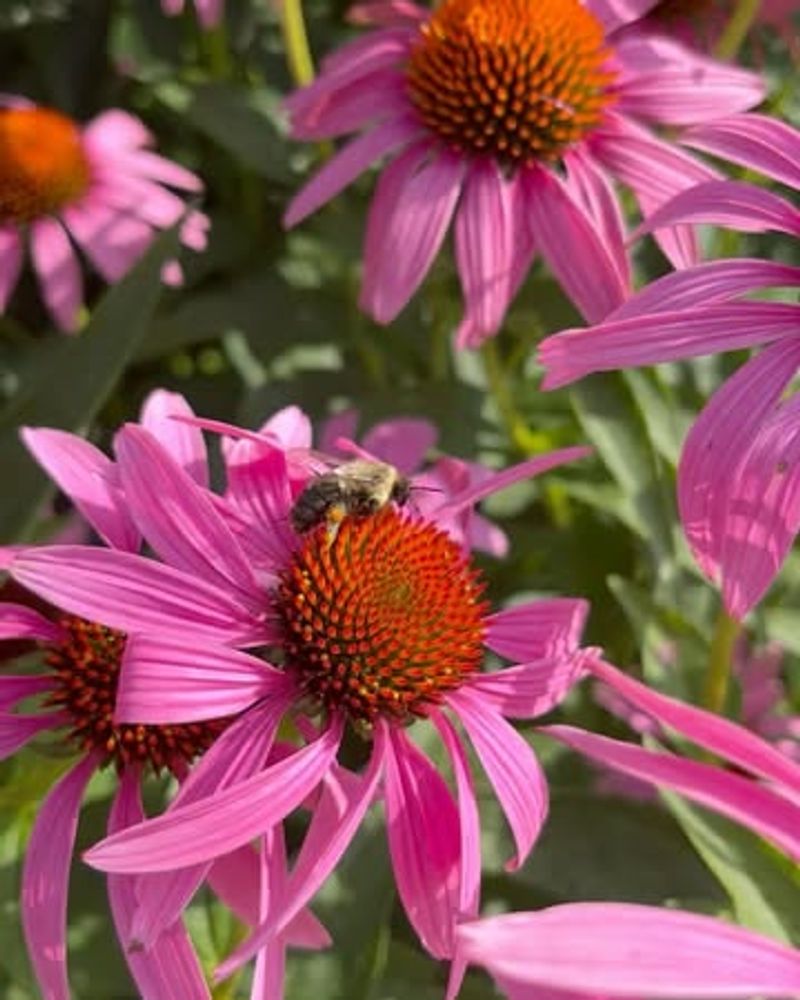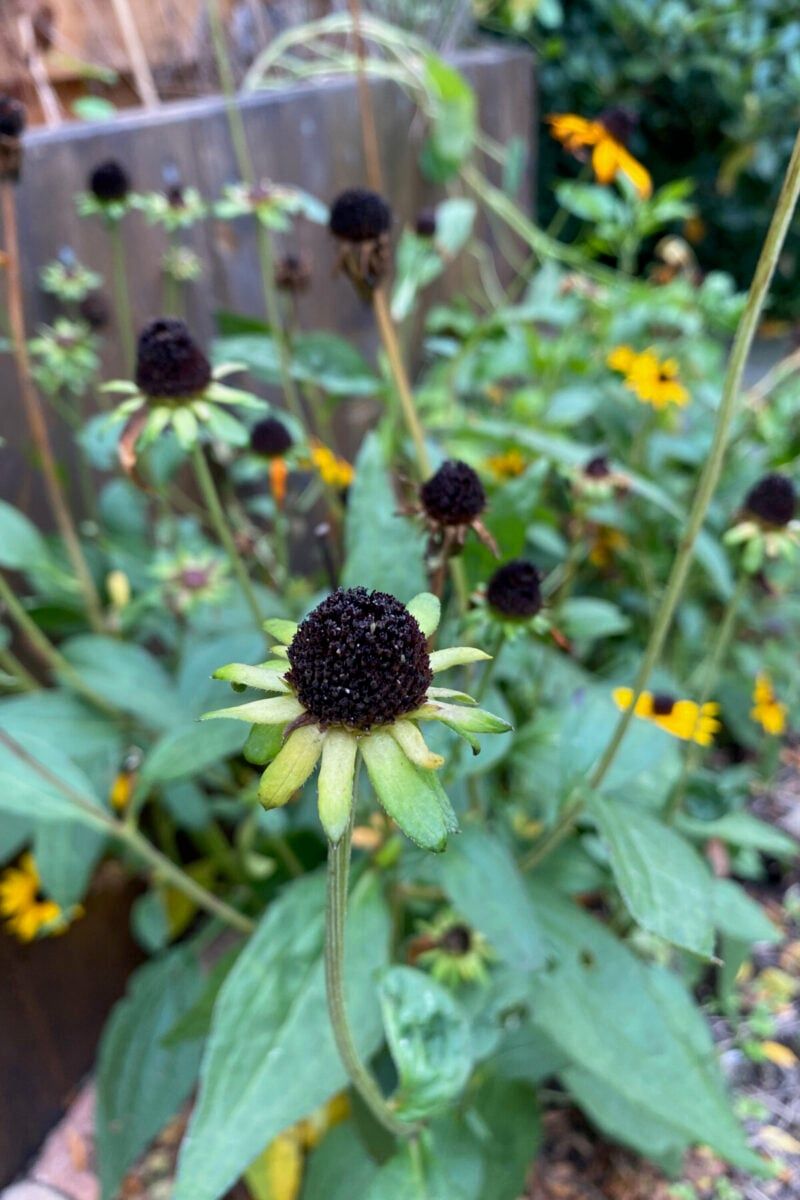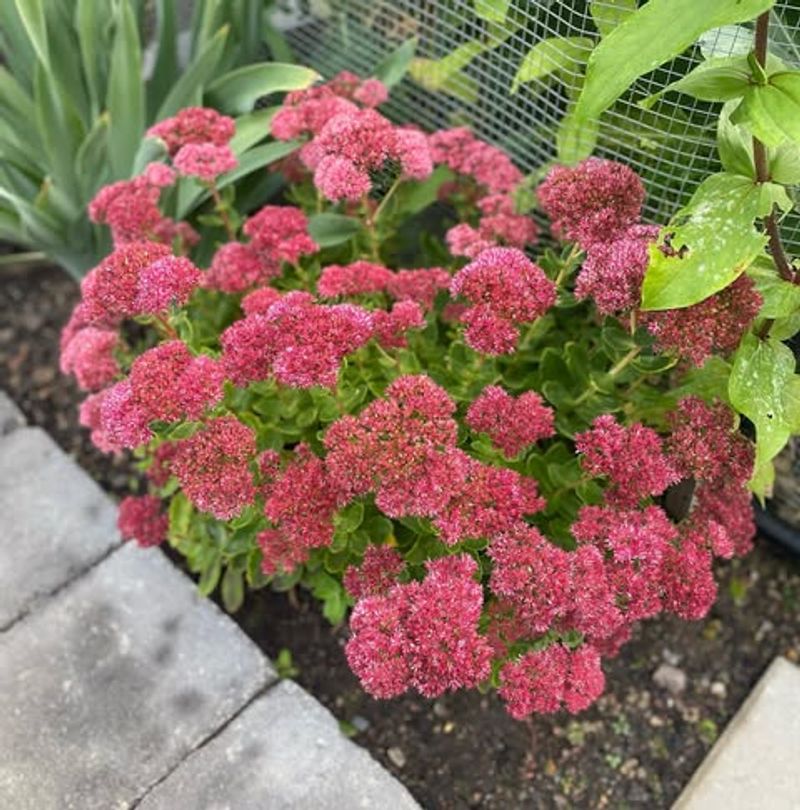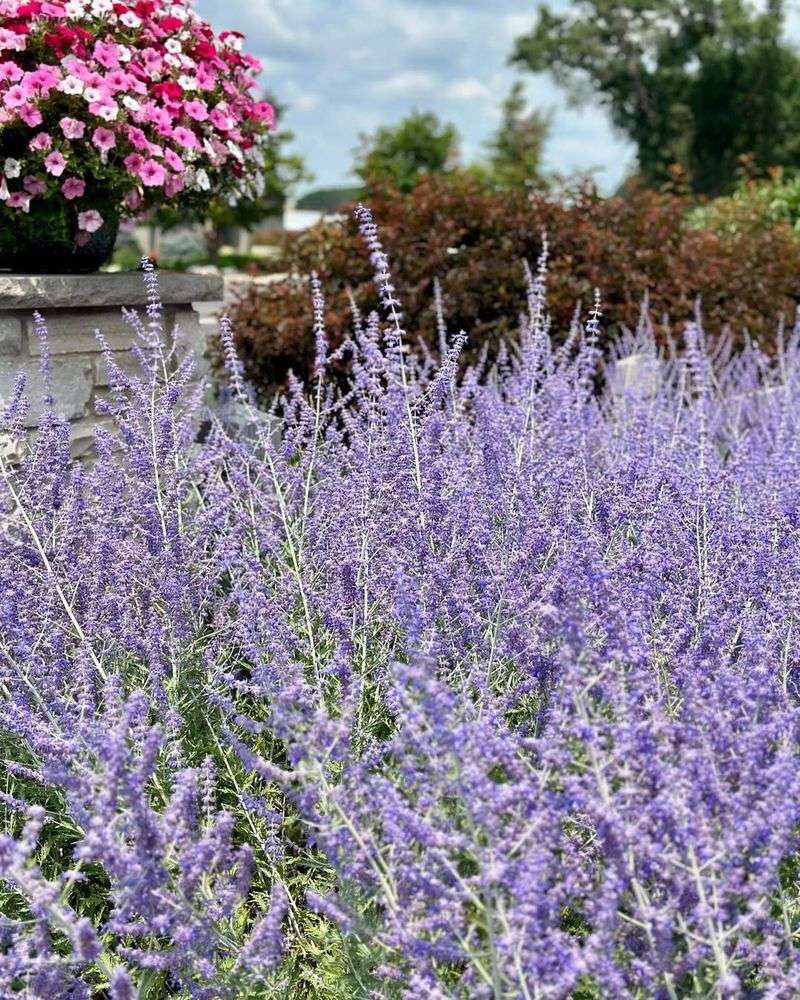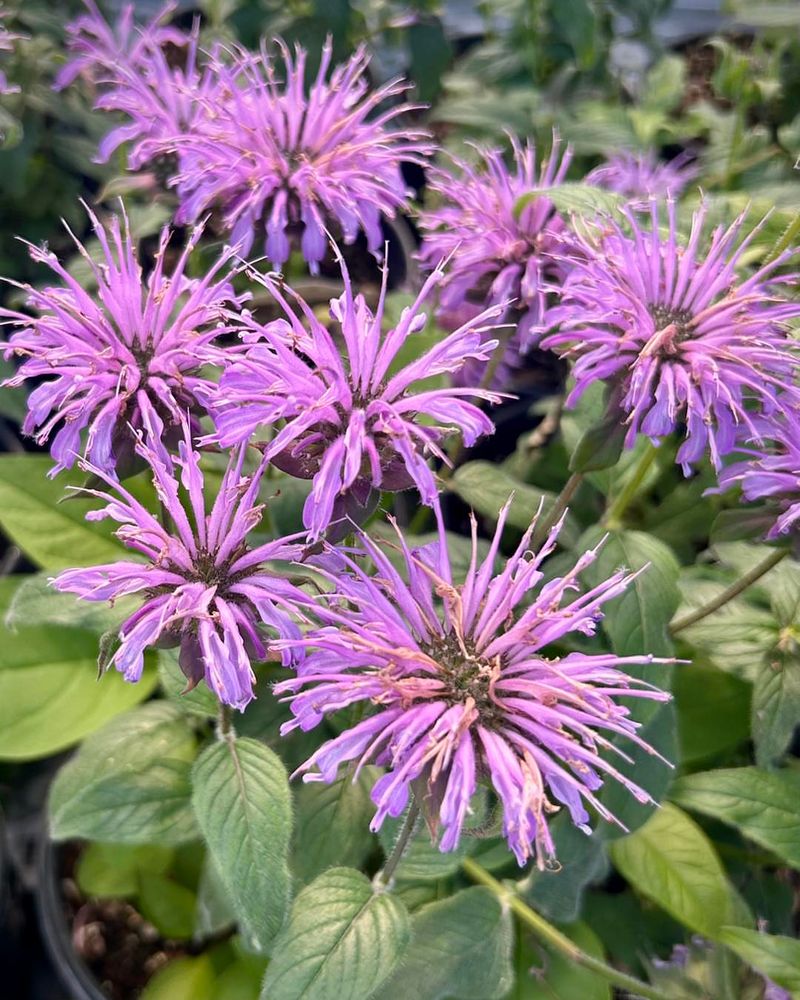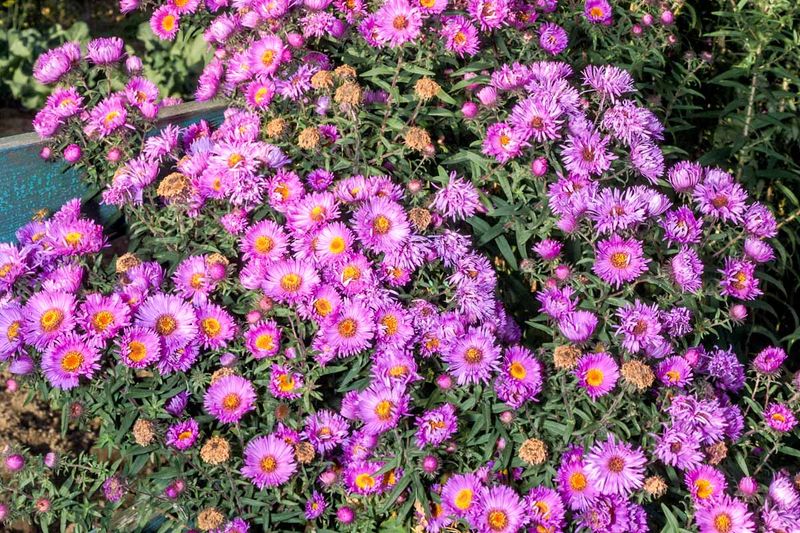Many gardeners make the mistake of cutting back perennials too late in December, but Virginia winters are deceptive.
Beneath the frosty ground, plants are quietly storing energy for a strong comeback in spring. Cutting them back now can damage buds and reduce next season’s growth.
Leaving perennials standing through the cold months protects their structure, preserves nutrients, and ensures a healthy, vibrant garden once warmer days arrive.
Patience in winter is key to keeping gardens resilient, giving plants the best chance to bounce back and fill landscapes with color and life in the coming season.
1. Coneflowers (Echinacea)
Coneflowers stand tall in winter gardens like natural bird feeders, and that is exactly what they become when you leave them standing.
The seed heads provide essential food for goldfinches, chickadees, and other songbirds during the coldest months when food sources become scarce.
Cutting them down in late December removes this vital wildlife resource right when birds need it most.
Beyond feeding feathered friends, those dried stems and seed heads offer protection to beneficial insects seeking shelter from harsh weather.
Ladybugs, native bees, and other garden helpers often overwinter in hollow plant stems.
When you remove this habitat in December, you are essentially evicting these helpful creatures from their winter homes.
The brown stalks also add interesting texture and architectural elements to an otherwise bare winter landscape.
Many gardeners appreciate the sculptural beauty of frost-covered seed heads on cold mornings.
Wait until early spring, around late March or early April in Virginia, to cut back your coneflowers.
By then, birds will have consumed most seeds, and beneficial insects will have emerged from their winter dormancy.
Your patience rewards both wildlife and your garden’s ecosystem with healthier balance and natural pest control come growing season.
2. Black-Eyed Susans (Rudbeckia)
These cheerful yellow bloomers deserve to keep their heads held high even after their petals fade away.
Black-eyed Susans develop tough, cone-shaped seed centers that become prime dining spots for hungry birds throughout Virginia’s winter months.
Chickadees and finches particularly love cracking into these nutritious seeds when snow covers the ground.
Leaving the foliage intact also provides crucial insulation for the plant’s crown, which sits right at soil level.
This protective layer of dried leaves and stems acts like a natural blanket, shielding tender roots from temperature fluctuations that can damage or destroy the plant.
December’s unpredictable weather in Virginia often swings between freezing nights and warmer days, making this protection especially important.
The dried stalks create vertical interest in winter gardens that would otherwise look completely flat and lifeless.
Some gardeners even enjoy how ice and snow cling to the dark seed heads, creating miniature winter sculptures.
Resist the urge to clean up your Rudbeckia until temperatures consistently stay above freezing in spring.
Typically, late March through mid-April works perfectly for Virginia gardens.
When new green growth emerges from the base, that signals the right time to remove old growth and make room for fresh foliage and flowers.
3. Sedum (Stonecrop)
Stonecrop earns its tough-as-nails reputation by looking gorgeous even when temperatures plummet below freezing.
The fleshy flower heads that bloomed pink or red during autumn transform into rusty bronze clusters that catch morning frost beautifully.
These architectural beauties add dimension to winter gardens that few other plants can match.
More importantly, sedum’s thick stems and dried flower clusters provide essential overwintering spots for native pollinators and beneficial insects.
Solitary bees often tuck themselves into hollow stems, while lacewings and other pest-eating insects nestle between the dried blooms.
Cutting back sedum in December destroys these critical winter shelters right when insects have nowhere else to go.
The succulent leaves at the base of the plant also need the protection that dry stems provide.
While sedum tolerates cold well, the crown benefits from the insulation that standing foliage offers during Virginia’s coldest snaps.
This natural mulch prevents the freeze-thaw cycles that can heave plants right out of the ground.
Wait until you see fresh green growth pushing up from the base in spring before removing old stems.
This usually happens in April for most Virginia regions.
Your patience means healthier plants and a thriving population of garden helpers ready to pollinate and protect your flowers all season long.
4. Ornamental Grasses
Waving gracefully in winter winds, ornamental grasses like switchgrass, little bluestem, and maiden grass become the stars of cold-season gardens.
Their golden, tan, and copper tones glow beautifully when backlit by low winter sun, creating movement and sound that bring life to dormant landscapes.
Cutting them back in December removes this visual and sensory interest when gardens need it most.
These grasses also serve as cozy winter condos for beneficial insects and small wildlife.
The dense clumps of foliage protect ground-dwelling creatures from predators and harsh weather.
Birds often roost inside larger grass clumps on cold nights, using the insulation to survive freezing temperatures.
The seed heads also provide food for songbirds well into winter.
From a practical standpoint, leaving grasses standing prevents soil erosion during winter rains and protects the plant’s crown from extreme cold.
The foliage acts as a natural mulch, moderating soil temperature and moisture levels around the roots.
This protection proves especially valuable during Virginia’s unpredictable winter weather patterns.
Plan to cut back ornamental grasses in late February or early March, before new growth begins emerging from the center of the clump.
This timing allows you to enjoy their winter beauty while ensuring you remove old foliage before it interferes with fresh blades pushing through in spring.
5. Russian Sage (Perovskia)
With silvery stems that shimmer in winter light, Russian sage maintains its ethereal beauty long after blooming season ends.
The woody stems and dried flower spikes create a soft, hazy appearance that many gardeners find more attractive than bare soil.
Those delicate branches catch snow and frost in ways that transform the plant into living winter art.
Cutting back Russian sage in late December exposes the plant’s crown to harsh weather when it is most vulnerable.
The woody stems and remaining foliage provide crucial insulation that protects the base of the plant from damaging freeze-thaw cycles.
Virginia winters can be particularly unpredictable, with warm spells followed by sudden freezes that can damage plants lacking proper protection.
The branching structure also offers shelter for overwintering beneficial insects that will help control aphids and other pests come spring.
Tiny parasitic wasps, lacewings, and ladybugs often hibernate in the woody stems and dried foliage.
Removing this habitat forces these garden allies to find shelter elsewhere, potentially leaving your garden without natural pest control.
Wait until early April to prune Russian sage, cutting stems back to about six inches above the ground just as new growth begins appearing at the base.
This timing ensures the plant stays protected through winter while allowing you to shape it properly for the upcoming growing season.
6. Bee Balm (Monarda)
Bee balm’s distinctive spiky seed heads stand like little crowns throughout winter, offering both visual appeal and practical benefits.
Goldfinches absolutely adore these seeds, often performing acrobatic feats to reach them during cold months.
Watching these bright yellow birds cling to dried bee balm stems brings joy to winter days when color is scarce in the garden.
The hollow stems of bee balm create perfect winter homes for native bees and other beneficial insects.
Mason bees, in particular, seek out these tubular stems to overwinter, emerging in spring ready to pollinate your garden.
Cutting back bee balm in December destroys these natural nesting sites right when pollinators need them most for survival.
Leaving the foliage also helps prevent common fungal problems that plague bee balm.
The standing stems allow better air circulation around the crown during wet winter months, reducing the moisture that encourages powdery mildew and other diseases.
This natural disease prevention works better than any chemical treatment you could apply.
Plan to remove old bee balm stems in early spring, around late March or early April, once you see new shoots emerging from the soil.
Cut stems down to about two inches above ground level.
This timing protects overwintering insects while preventing old growth from harboring diseases that could affect new foliage as temperatures warm up.
7. Asters
Asters bloom late in the season, often showing color well into November across Virginia.
Because they flower so late, many asters have not fully gone dormant by December, and their energy is still moving down into the roots for winter storage.
Cutting them back interrupts this important process, potentially weakening the plant and reducing next year’s bloom display.
The dried flower heads and branching stems also provide food and shelter for wildlife during the leanest months.
Small native bees often overwinter in the hollow stems, while songbirds pick through the seed heads searching for nutrition.
The branching structure creates protective microhabitats where insects can escape wind and predators throughout winter.
From an aesthetic perspective, frost-covered aster stems add delicate beauty to winter gardens.
The intricate branching patterns become more visible once leaves drop, creating lacy silhouettes against snow or evergreen backgrounds.
Many garden designers specifically plan for this winter interest when placing asters in the landscape.
The best time to cut back asters in Virginia is mid to late April, after new basal growth appears and all danger of hard frost has passed.
This late timing ensures the plant has completed its dormancy cycle and stored sufficient energy for vigorous spring growth.
Your patience results in fuller plants with more abundant flowers when autumn arrives again.


